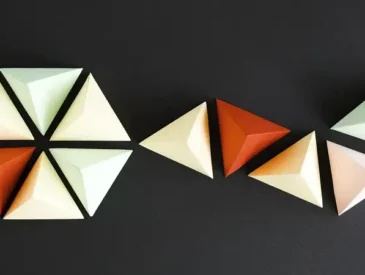Apartment living presents unique challenges and opportunities when it comes to designing and organizing your space. The concept of “apartment therapy” has emerged as a comprehensive approach to creating a harmonious and functional living environment, drawing from various disciplines such as interior design, psychology, and wellness. This article delves into the key principles of apartment therapy and offers practical tips for transforming your apartment into a sanctuary of comfort and productivity.
Understanding Apartment Therapy
Apartment therapy is more than just arranging furniture or choosing color schemes; it’s about fostering a holistic living experience that nurtures both physical and mental well-being. This approach considers the interplay between environment and emotions, recognizing that our surroundings profoundly impact our mood, productivity, and overall quality of life.
The Philosophy Behind Apartment Therapy
At its core, apartment therapy is based on several fundamental principles:
- Personalization: Your living space should reflect your personality and lifestyle. Personalization involves incorporating elements that resonate with you, whether it’s through artwork, memorabilia, or unique furnishings.
- Functionality: Every item and space in your apartment should serve a purpose. Efficient use of space and multifunctional furniture can help maximize limited square footage, especially in small apartments.
- Wellness: A well-designed apartment promotes physical health and mental well-being. This includes ensuring proper lighting, ventilation, and the use of non-toxic materials.
- Sustainability: Incorporating eco-friendly practices and materials not only benefits the environment but also creates a healthier living space. This can involve using recycled materials, energy-efficient appliances, and reducing waste.
- Mindfulness: Mindfulness in design encourages living in the present moment and creating a space that fosters calm and relaxation. This principle emphasizes decluttering, simplicity, and intentionality in décor choices.
Practical Tips for Implementing Apartment Therapy
1. Declutter and Organize
Decluttering is the first step towards a harmonious living space. Clutter not only occupies physical space but also contributes to mental clutter, causing stress and distraction. Start by systematically going through your belongings and deciding what to keep, donate, or discard. Use storage solutions like baskets, shelves, and under-bed storage to keep items organized and out of sight.
2. Maximize Natural Light
Natural light has a significant impact on mood and well-being. Optimize the natural light in your apartment by using sheer curtains, strategically placing mirrors to reflect light, and choosing light-colored paint for walls and ceilings. If your apartment lacks natural light, invest in high-quality artificial lighting that mimics daylight.
3. Choose a Calming Color Palette
Color plays a crucial role in setting the tone of your living space. Opt for a calming color palette with neutral tones and soft hues. Colors like soft blues, greens, and warm grays can create a serene atmosphere. You can add pops of color through accessories and artwork to keep the space lively and personalized.
4. Incorporate Greenery
Plants are a simple yet effective way to bring life and vitality into your apartment. They improve air quality, reduce stress, and enhance the overall aesthetic. Choose low-maintenance plants like succulents, snake plants, or pothos if you’re new to gardening. Use a variety of plant sizes and types to create visual interest.
5. Create Functional Zones
Define specific areas in your apartment for different activities to improve functionality and flow. For example, create a cozy reading nook, a dedicated workspace, and a relaxing lounging area. Use rugs, furniture arrangement, and lighting to delineate these zones without the need for walls.
6. Invest in Multi-functional Furniture
Multi-functional furniture is a game-changer for small apartments. Look for pieces like sofa beds, fold-out desks, and storage ottomans. These items not only save space but also add versatility to your living arrangements. When selecting furniture, consider its size, shape, and storage capabilities.
7. Enhance Air Quality
Good air quality is essential for a healthy living environment. Ensure proper ventilation by opening windows regularly and using exhaust fans in the kitchen and bathroom. Invest in air purifiers if needed, and avoid using products with harsh chemicals that can release toxins into the air.
8. Embrace Minimalism
Minimalism encourages simplicity and intentionality in design. Focus on quality over quantity and choose items that serve a purpose or bring joy. A minimalist approach can help reduce stress, improve focus, and create a more spacious feel in your apartment.
9. Personalize with Art and Décor
Personal touches make an apartment feel like home. Display artwork, photographs, and decorative items that reflect your taste and experiences. Arrange these items thoughtfully to avoid a cluttered look, and rotate them periodically to keep the space feeling fresh.
10. Practice Mindful Maintenance
Keeping your apartment clean and organized requires regular maintenance. Develop habits like making your bed daily, tidying up before bed, and scheduling regular deep cleaning sessions. Mindful maintenance helps maintain the harmony and functionality of your living space.
The Emotional Impact of a Well-Designed Apartment
A well-designed apartment can significantly impact your emotional and psychological well-being. Here are some ways apartment therapy can enhance your mental health:
Stress Reduction
A clutter-free and organized space reduces visual and mental stress. Knowing where everything is and having a place for everything can bring a sense of order and calm.
Increased Productivity
A functional and well-arranged apartment can boost productivity. Dedicated workspaces, good lighting, and ergonomic furniture can create an environment conducive to focused work and creativity.
Enhanced Mood
Living in a space that reflects your personality and preferences can elevate your mood. Personal touches and a calming color palette can create a positive and uplifting atmosphere.
Improved Sleep
A well-designed bedroom that promotes relaxation and comfort can improve sleep quality. Consider factors like mattress quality, blackout curtains, and a calming bedtime routine to enhance your sleep environment.
Greater Sense of Control
Having control over your living environment can enhance your sense of autonomy and well-being. Making intentional choices about your space empowers you to create a home that supports your lifestyle and needs.
Case Studies: Successful Apartment Therapy Transformations
Case Study 1: Small Studio Makeover
Sarah, a young professional living in a 400-square-foot studio, felt overwhelmed by the lack of space and constant clutter. By applying apartment therapy principles, she transformed her studio into a functional and stylish home. Key changes included:
- Decluttering: Sarah donated and discarded items she no longer needed.
- Multi-functional Furniture: She invested in a sofa bed and a fold-out dining table.
- Zoning: Sarah created distinct areas for sleeping, working, and relaxing using rugs and furniture placement.
- Personalization: She added personal touches with artwork, plants, and decorative items.
The result was a cohesive and inviting space that catered to her needs and reduced her stress.
Case Study 2: Family Apartment Overhaul
The Johnson family, living in a two-bedroom apartment, struggled with organization and functionality. By adopting apartment therapy principles, they achieved a more harmonious living space. Key changes included:
- Maximizing Storage: The family installed built-in shelves and under-bed storage to keep items organized.
- Functional Zones: They created a play area for the kids, a home office for the parents, and a cozy family lounge.
- Calming Color Palette: They painted the walls in soft, neutral tones to create a serene atmosphere.
- Wellness Focus: The family improved air quality by incorporating plants and using eco-friendly cleaning products.
These changes transformed their apartment into a more functional and enjoyable home for the entire family.
Conclusion
Apartment therapy is a holistic approach to creating a living space that nurtures both physical and mental well-being. By focusing on personalization, functionality, wellness, sustainability, and mindfulness, you can transform your apartment into a sanctuary that supports your lifestyle and enhances your quality of life. Whether you’re living in a small studio or a larger family apartment, the principles of apartment therapy can help you create a harmonious and inviting home. See More




